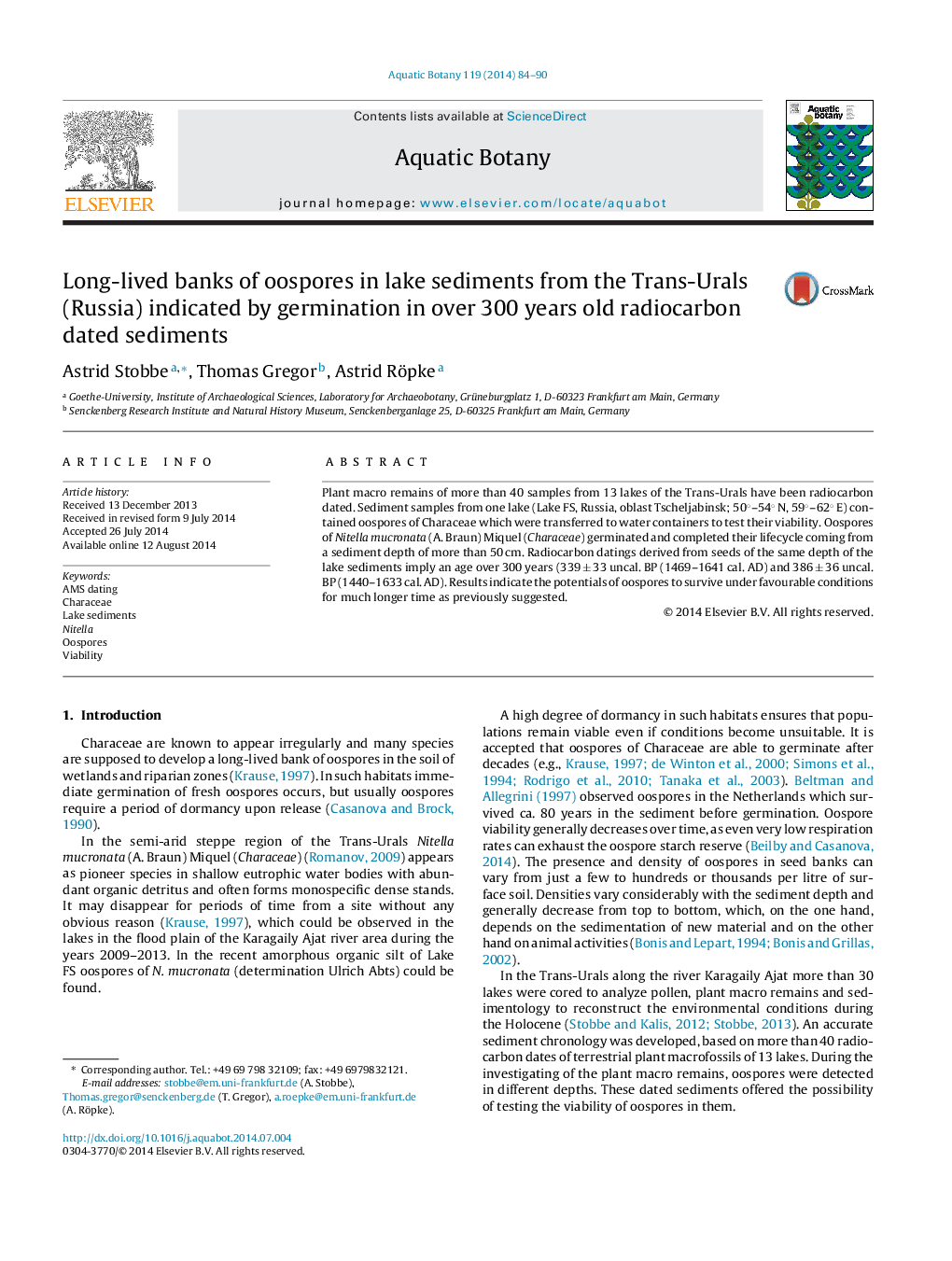| Article ID | Journal | Published Year | Pages | File Type |
|---|---|---|---|---|
| 4527762 | Aquatic Botany | 2014 | 7 Pages |
•Radiocarbon dated sediment samples from lakes in the Trans-Urals (Siberia) contained diaspores of Characeae.•Oospores of Nitella mucronata (A. Braun) Miquel (Characeae) germinated and completed their lifecycle coming from a sediment depth of more than 50 cm.•Seeds from corresponding lake sediments were dated as 339 ± 33 uncal. BP (1469–1641 cal. AD) and 386 ± 36 uncal. BP (1440–1633 cal. AD).•Rapid covering under anaerobic conditions coupled with constant moisture, deep winter temperatures for several months presumably ensure the long lasting viability of the oospores.
Plant macro remains of more than 40 samples from 13 lakes of the Trans-Urals have been radiocarbon dated. Sediment samples from one lake (Lake FS, Russia, oblast Tscheljabinsk; 50°–54° N, 59°–62° E) contained oospores of Characeae which were transferred to water containers to test their viability. Oospores of Nitella mucronata (A. Braun) Miquel (Characeae) germinated and completed their lifecycle coming from a sediment depth of more than 50 cm. Radiocarbon datings derived from seeds of the same depth of the lake sediments imply an age over 300 years (339 ± 33 uncal. BP (1469–1641 cal. AD) and 386 ± 36 uncal. BP (1440–1633 cal. AD). Results indicate the potentials of oospores to survive under favourable conditions for much longer time as previously suggested.
